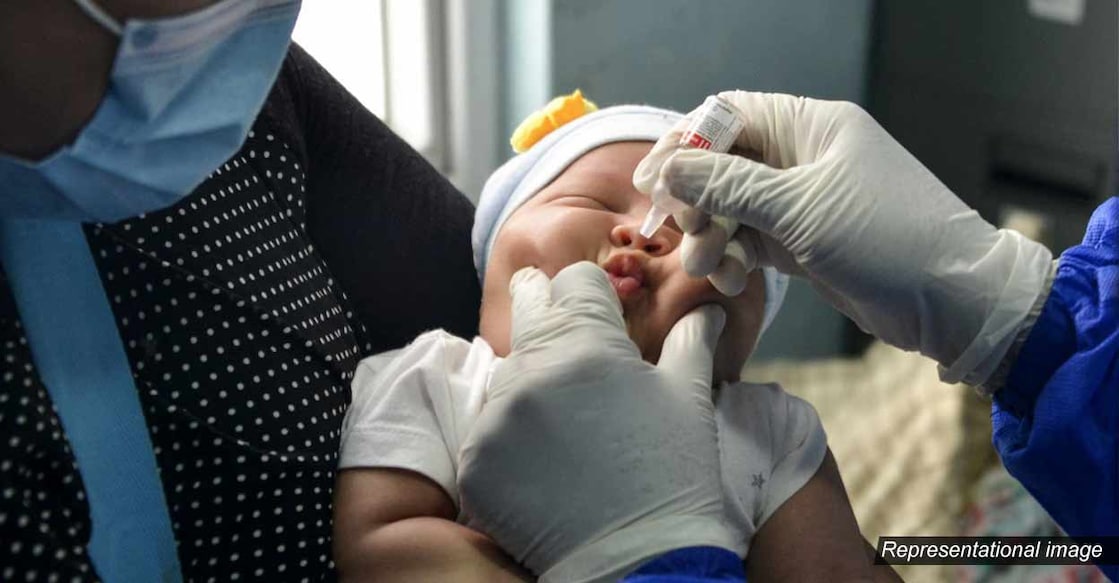Global child deaths reach historic low in 2022

Mail This Article
• The number of children who died before their fifth birthday has reached a historic low, dropping to 4.9 million in 2022, according to the latest estimates released by the United Nations Inter-agency Group for Child Mortality Estimation (UN IGME).
• The report reveals that more children are surviving today than ever before, with the global under-5 mortality rate (U5MR) declining by 51 per cent since 2000.
• Several low and lower-middle-income countries have outpaced this decline, showing that progress is possible when resources are sufficiently allocated to primary health care, including child health and well-being.
• For example, the findings show that Cambodia, Malawi, Mongolia, and Rwanda have reduced under-5 mortality by over 75 per cent since 2000.
• But the findings also show that despite this progress, there is still a long road ahead to end all preventable child deaths.
UN Inter-agency Group for Child Mortality Estimation (UN IGME)
• The United Nations Inter-agency Group for Child Mortality Estimation (UN IGME) was formed in 2004 to share data on child mortality, improve methods for child mortality estimation, report on progress towards child survival goals, and enhance country capacity to produce timely and properly assessed estimates of child mortality.
• The UN IGME is led by the United Nations Children’s Fund (UNICEF) and includes the World Health Organisation (WHO), the World Bank Group and the United Nations Population Division of the Department of Economic and Social Affairs as full members.
• UN IGME’s independent Technical Advisory Group (TAG), comprised of leading academic scholars and independent experts in demography and biostatistics, provides guidance on estimation methods, technical issues, and strategies for data analysis and data quality assessment.
• UN IGME updates its child mortality estimates annually after reviewing newly available data and assessing data quality.
Key findings:
• The world has suffered some 162 million under-five deaths since 2000, nearly equal to the current population of Bangladesh. The latest UN IGME estimates show that progress has been made in the campaign to end preventable child mortality around the globe.
• In 2022, the annual number of under-five deaths dropped to 4.9 million. And since 2000, the global under-five mortality rate (U5MR) has declined by more than half. This notable achievement has been driven largely by sustained commitment on the part of governments, organisations, local communities, health care professionals and families.
• Of the 4.9 million under-five deaths in 2022, 2.3 million occurred during the first month of life and 2.6 million children died between the ages of 1 and 59 months.
• This means that one neonatal death occurred every 14 seconds, and one under-five death in every 6 seconds.
• This tragic loss of life is primarily due to preventable or treatable causes, such as preterm birth, complications around the time of birth, pneumonia, diarrhoea, and malaria.
• While the global numbers show welcome signs of progress, there are also substantive threats and inequities that jeopardize child survival in many parts of the world.
• Of the 4.9 million under-five deaths, 2.3 million occurred during the first month of life (neonatal deaths), and 2.6 million between the ages of one month and 59 months.
• These threats include increasing inequity and economic instability, new and protracted conflicts, the intensifying impact of climate change, and the fallout of COVID-19, which could lead to stagnation or even reversal of gains and the continued needless loss of children’s lives.
• Children born into the poorest households are twice as likely to die before the age of 5 compared to the wealthiest households, while children living in fragile or conflict-affected settings are almost three times more likely to die before their fifth birthday than children elsewhere.
• The SDGs call for ending preventable deaths of children under age 5 by 2030, with all countries aiming to achieve a U5MR of 25 or fewer deaths per 1,000 live births and a neonatal mortality rate (NMR) of 12 or fewer deaths per 1,000 live births.
• At current rates, 59 countries will miss the SDG under-5 mortality target, and 64 countries will fall short of the newborn mortality goal.
• That means by 2030, an estimated 35 million children will die before reaching their fifth birthday — a death toll that will largely be borne by families in sub-Saharan Africa and Southern Asia or in low- and lower-middle-income countries.
Urgent action needed to prevent child deaths
• Many lives could have been saved with better access to high-quality primary health care, including essential, low-cost interventions, such as vaccinations, availability of skilled health personnel at birth, support for early and continued breastfeeding, and diagnosis and treatment of childhood illnesses.
• Improving access to quality health services and saving children’s lives from preventable deaths requires investment in education, jobs, and decent working conditions for health workers to deliver primary health care, including community health workers.
• As trusted community members, community health workers play an important role in reaching children and families in every community with life-saving health services like vaccinations, testing and medicine for deadly yet treatable illnesses, and nutrition support. They should be integrated into primary health care systems and paid fairly, well trained, and equipped with the means to provide the highest quality of care.
• Studies show that child deaths in the highest-risk countries could drop substantially if community-based child survival interventions could reach those in need. This package of interventions alone would save millions of children and would deliver care closer to home.
• Integrated management of childhood illnesses – especially the leading causes of post-neonatal death, acute respiratory infections, diarrhoea, and malaria – is needed to improve child health and survival.
• If countries at risk of missing the SDG target on under-five mortality accelerate progress and achieve it on time, nearly nine million child lives could be saved between now and 2030.




